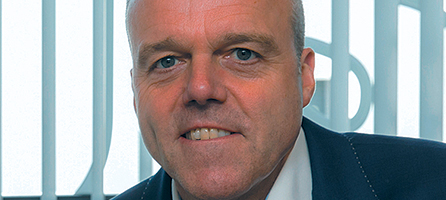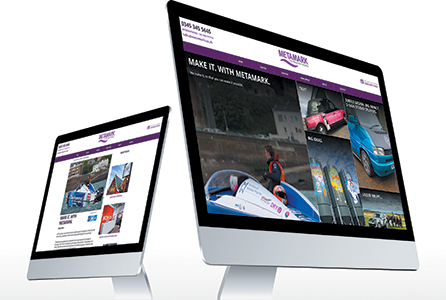
A few years ago, it was estimated that the UK sign industry employed up to 22,000 people and is now worth up to £500m
The Sign Industry Uncovered
Indisputably, an investment in good signage is one of the best financial decisions that a company can make, with 83 percent of businesses across the UK agreeing that signs, particularly external signs, are their most cost-effective marketing tool.
Furthermore, nearly three-quarters of British consumers believe that a company’s signage accurately reflects the quality of its products and or services, with good signage impacting positively on purchases and poor, or badly maintained signs, preventing them from engaging with a business.
It is not surprising then, that with an enthusiastic customer base and a relatively low cost of entry, the sign industry remains an attractive proposition for people who want to combine their artistic leanings with their practical skills.
Of course, since the advent of digital printing and the ongoing refinement of printing hardware, the term signage, has now expanded to embrace visual communications in their broadest sense. Print and repro companies producing signs and banners, sign companies diversifying into the production of point-of-sale materials and exhibition graphics and others using their equipment to capitalise on the multitude of niche areas that have opened up in the vehicle wrapping, décor and industrial sectors, to name but a few.
But how do the different categories of sign and graphics providers break down?
When David Catanach, director of the British Sign & Graphics Association (BSGA) is asked how many sign companies are currently operating within the UK, he responds to a simple question with a nuanced answer.

David Catanach, director of the British Sign & Graphics Association
Catanach, who has worked within the sign sector for the best part of 30 years, explains that he would define a bone fide sign company as one that offers signs that include some degree of fabrication, plus installation, but agrees that the term ‘sign’ is now all encompassing.

According to David Catanach, director of the BSGA, the term ‘sign’ is now all encompassing”
He says: “There are presently around 4,000 or so actual sign companies, but this number swells to around 13,000 if you add print companies that also offer signs and/or graphics.
“There are no cut and dried figures, but a few years ago, reliable government statistics suggested that the sign industry employed around 22,000 people. Add in a recession and that number has probably contracted, but if you add those who are now working for the 8,000 or so print companies that are members of the BPIF [the British Print Industries Federation], plus those very small companies and individuals that fly under the radar, it swells to around 44,000.
“We estimate that a single sign-maker, working on his or her own would have to turn over at least £50,000 every year to make the enterprise worthwhile, and by that token everyone working within a sign company would have to generate another £50,000, which suggests that as a whole, the producers of signs and graphics are turning over an annual total of at least £2.2 million.”
He goes on to report that while 80 percent of the companies active within the sign and graphics sector are small businesses with a turnover of less than £500,000, the largest sign companies, the ones responsible for creating the most visible retail and corporate signage, enjoy a turnover of up to £10 million a year, and in some cases more.

Around 80 percent of companies operating within the signs and graphics sector are small businesses with a turnover of less than £500,000”
When asked whether he has noticed any consolidation within the industry, with sign and print companies amalgamating in order to offer their customers a more complete service, Catanach immediately names Lincoln-based Allen Signs as a sign-maker that acquired the digital print company it previously used as a sub-contractor.
He adds that he expects to see a lot more of this, with some of the newer more digitally-focused companies leading the way.
He says: “They have a different attitude to business – they’re not interested in debating precisely what constitutes a sign and don’t accept that there are any production barriers either. If they can make it, they can sell it and, most importantly, since they have grown up with social media, they are more likely to use it to create effective marketing strategies. In the next few years the industry could change significantly.”
Ian Simister, sales director of Metamark, the UK’s only home-grown vinyl manufacturer, agrees that the face of the sign industry is set to change and opines: “One thing we’re pretty certain of is that the size of the opportunity is expanding. We’re doing more business with more customers than we ever have, partly because there’s been organic growth in core disciplines, such as vehicle graphics, while new applications, of which décor is a good example, are growing at a cracking pace. This has lead to companies from outside the industry, such as those specialising in interior design and decoration, beginning to move into the market too.”

Ian Simister, sales director of Metamark
Although Simister does not dispute Catanach’s estimate of 13,000 sign and graphics practitioners, he is loath to put a precise figure on the total number of operatives, or to estimate the value of the market.
He says: “We deal with a lot of companies that style themselves as sign-makers and many others who choose not to. The sign companies now seem to be participating in a lot of design-led graphic production opportunities that go far beyond what was once considered to be sign-making’s core. It’s been that way for a long time now. We don’t differentiate to any material extent and prefer to centre our efforts on expanding the opportunity for all, while offering great service and value.

Metamark is the only UK manufacturer of self-adhesive vinyls
“There was a lot of obvious convergence as digital was rising and now there’s a lot of churn as very similarly equipped producers move into adjacent markets. Most ‘sign-makers’ are doing work now that would have once belonged to other businesses. We’re heading to a point where print dominates production and applications for it shoot off in all directions, so pick one and follow it would seem to be a good basis for a business!”
Brett Newman, chief operations manager at Hybrid Services, the exclusive UK and Ireland distributor for Mimaki, acknowledges that over the last two decades, what was once described as the sign industry has become increasingly amorphous. His definition of a sign includes the broad gamut of graphic production but omits some of the other things that can be produced on Mimaki equipment, such as printed t-shirts and promotional products.
.jpg)
Brett Newman, chief operations manager of Hybrid Services, Mimaki’s exclusive UK and Ireland distributor
Newman estimates the total number of UK sign and graphics companies to be around the 10,000 mark but agrees that there are probably also many small, unlisted companies operating from spare bedrooms or garden sheds, and that these, as well as the in-house print departments operated by retailers, banks and others in the commercial world, could conceivably swell that number to 13,000.
He confirms that anyone who purchases wide-format hardware for one purpose can also put it to a dozen or more other uses and somewhat wryly, he admits: “We’ve all spent a lot of time banging on about how the sign and graphics sector offers a myriad of opportunities for profitable divergence and although it’s great that so many companies have taken full advantage of this to extend the scope of their operations, it’s also made it much more difficult for us to neatly categorise them!”
He adds that this eagerness to open up new revenue streams has, on the whole, been good for the industry, as it has helped to grow the market. And while the number of new companies who are now moving into the signs arena from other areas has disturbed some, he makes the point that such convergence is a two-way street.
He says: “We are all aware that following the acquisition of wide-format printers, commercial print, repro and exhibition companies have made inroads into the sign industry, but at the same time, many sign companies are now also adding letterheads, business cards and other small format sales collateral to their repertoire too.
Newman also thinks that the industry has benefitted exponentially from the technological advances that have produced better, faster and more reliable equipment and more user friendly and flexible materials. “Take vehicle wrapping”, he says, “that’s become a whole profitable sub-section of signing thanks to the development of a new generation of vinyl that is specifically designed to cope with bumps and curves. Now, the material manufacturers are also developing lots of new products for the décor market, which will further extend the possibilities.”
O Factoid: Approximately in the UK, 13,000 companies are now producing signs and graphics. O
Whilst exact industry statistics are in short supply, the general consensus of opinion is that the total value of the UK industry, when the revenue generated by industry suppliers is added to that of sign and graphics practitioners, is somewhere in the region of £500 million.
Whichever way you look at it, it is a large amount of dosh, which seems set to increase even further as new applications come on board, so the comforting fact for sign and graphics companies to hold onto is that there is more than enough to go around!
Your text here...